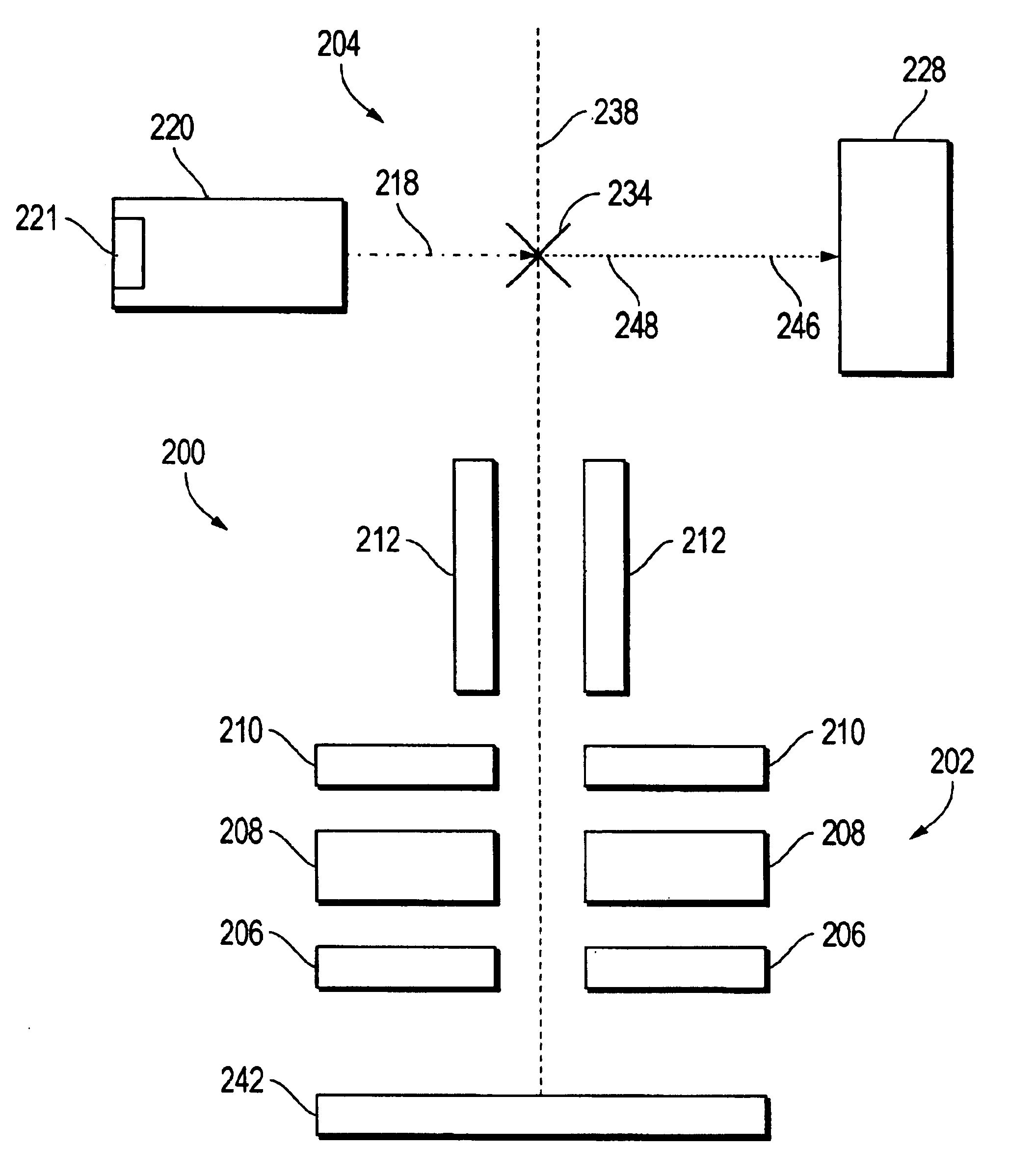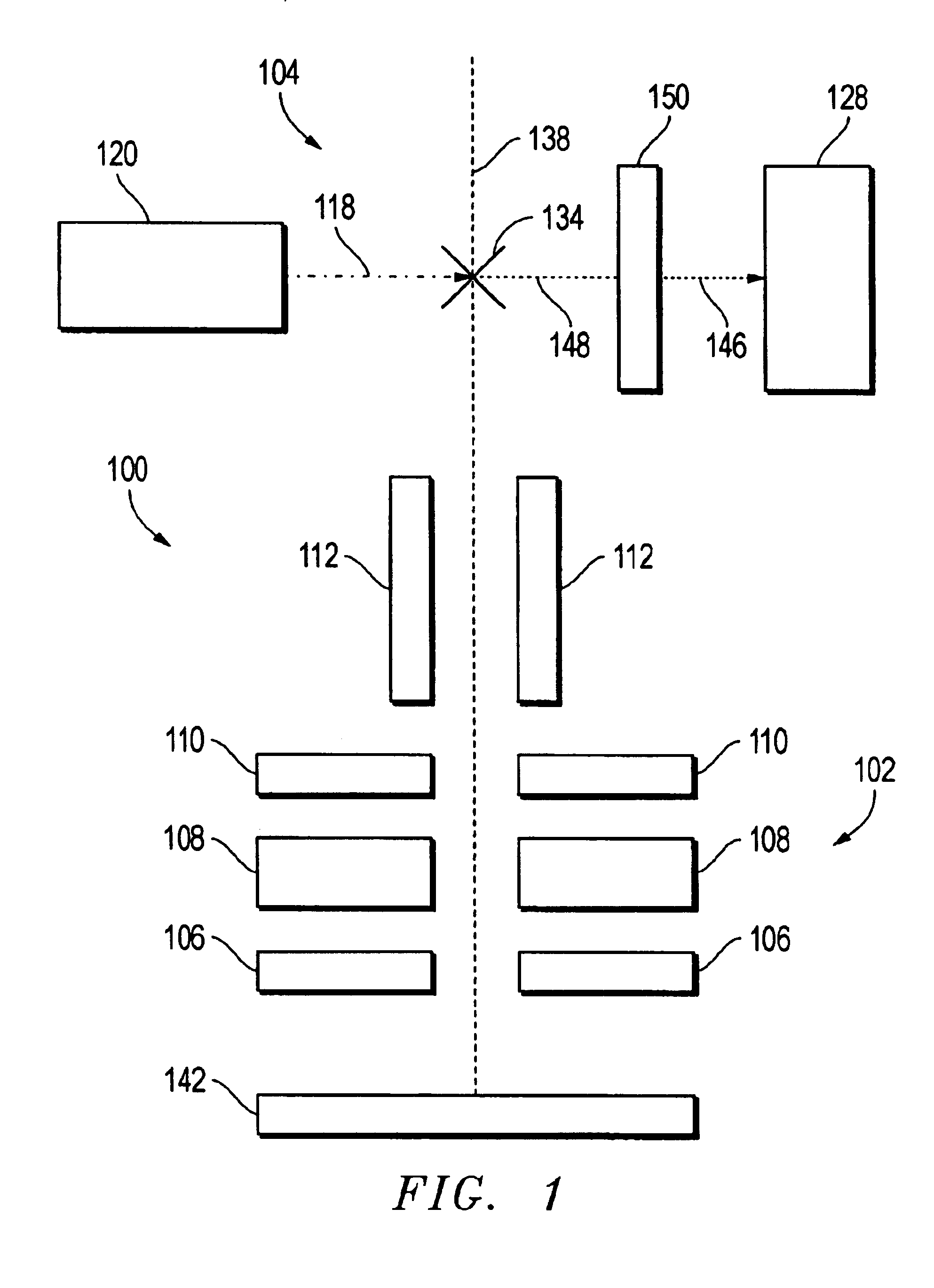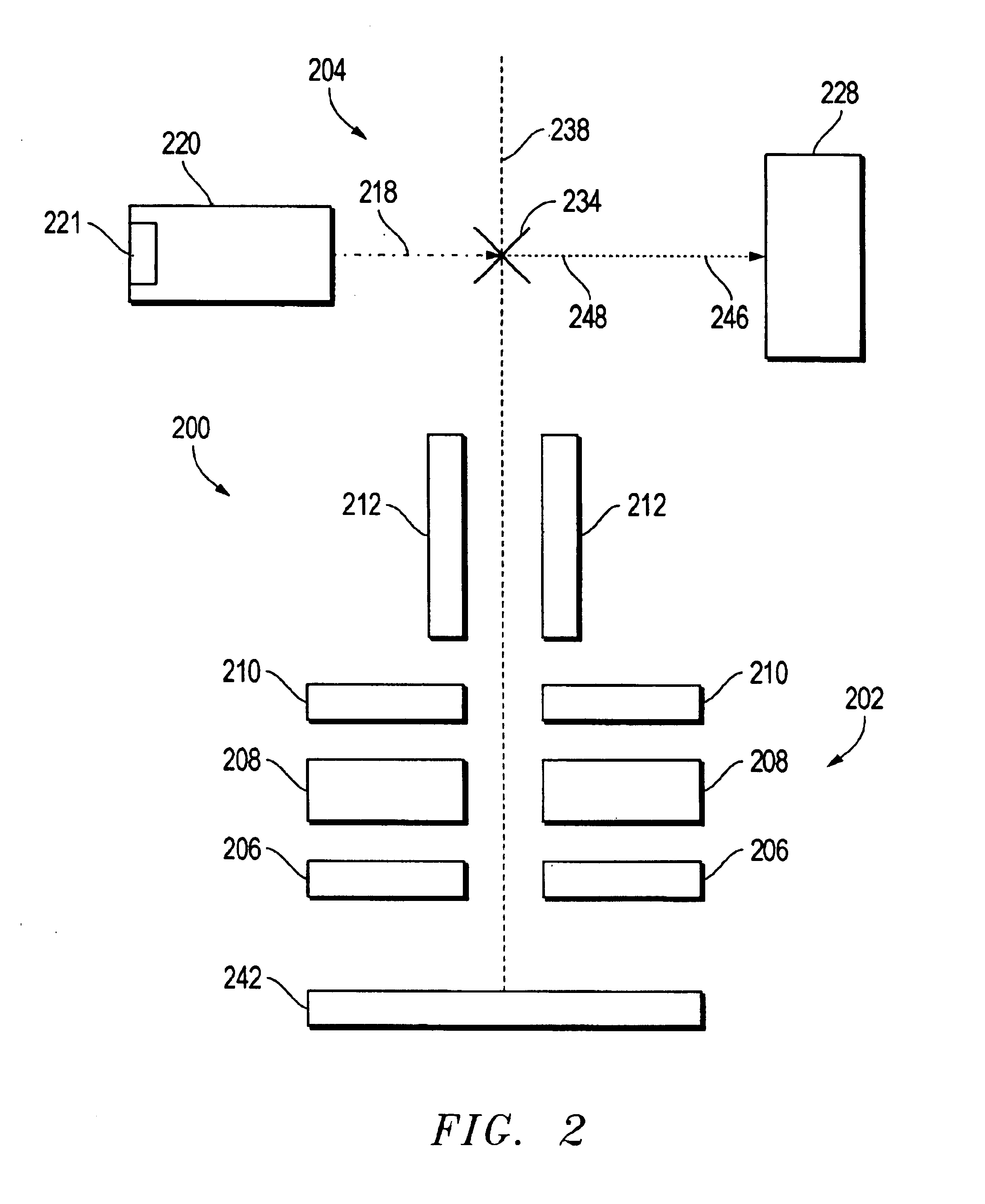Focused ion beam system with coaxial scanning electron microscope
a coaxial scanning electron microscope and focused ion beam technology, applied in the field of electron beam imaging and micromachining microscopic features, can solve the problems of sample damage during the fib image process, the limit on the size of the write head that can be manufactured using lithographic techniques alone, and the placement accuracy of the fib beam to the sem image has limitations, so as to achieve superior and non-destructive sem imaging
- Summary
- Abstract
- Description
- Claims
- Application Information
AI Technical Summary
Benefits of technology
Problems solved by technology
Method used
Image
Examples
Embodiment Construction
[0049]The embodiments described below accomplish several different design goals for a FIB-SEM device sharing a final lens and having both beams approximately coaxial as they approach the work piece. The SEM alignment of FIB milling is accurate enough to allow processing such as manufacturing, modification, sample preparation, or metrology of various nanodevices, and it avoids the sample damage that results from FIB imaging. Optional through-the-lens detection of secondary electrons allows the sample to be placed close to the final lens, thus shortening the working distance and improving performance.
[0050]Throughput will be improved since the final lens high voltage need not be adjusted when changing beams. Mass production—including modification, sample preparation, and metrology—requires that any necessary micromachining be done very rapidly. A large voltage change in the final lens can take as much as 1 second—a significant amount of time in the mass production process. Therefore, ...
PUM
| Property | Measurement | Unit |
|---|---|---|
| voltage | aaaaa | aaaaa |
| voltage | aaaaa | aaaaa |
| voltage | aaaaa | aaaaa |
Abstract
Description
Claims
Application Information
 Login to View More
Login to View More - R&D
- Intellectual Property
- Life Sciences
- Materials
- Tech Scout
- Unparalleled Data Quality
- Higher Quality Content
- 60% Fewer Hallucinations
Browse by: Latest US Patents, China's latest patents, Technical Efficacy Thesaurus, Application Domain, Technology Topic, Popular Technical Reports.
© 2025 PatSnap. All rights reserved.Legal|Privacy policy|Modern Slavery Act Transparency Statement|Sitemap|About US| Contact US: help@patsnap.com



